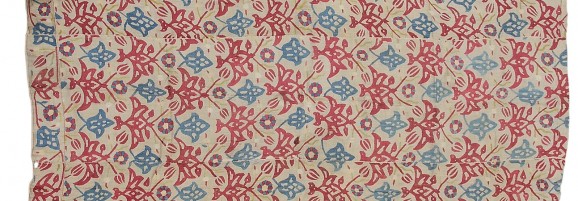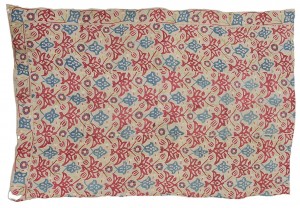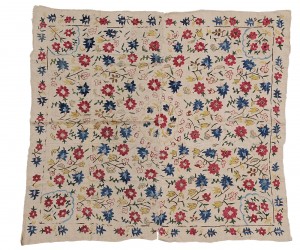Eastern Treasures – Zadah Gallery Asian Art In London Exhibition
During the month of November (2011) the city of London became Asian, or at least those sectors concerned with antique and contemporary art did. Asian Art, a collective of Asian art societies, galleries, museums, and auction houses annually organizes a menu of events including major auctions, exhibitions, events, and sales. In keeping with this annual Asian invasion Zadah’s Antique Textiles Gallery hosted an exhibition, Eastern Treasures (curated by Sarah Haberkern) that treated us with an overview of textiles spanning most Asian regions. Zadah, who has built his reputation with numerous previous textile exhibitions, dipped into his family’s collection to augment this show’s Asian mission. One of these special treats was a pair of 17/18th century embroidered panels (see background in the ‘gallery team’ image below) with an impressive provenance having previously been in the collection of Tate Gallery’s founder, Sir Henry Tate.
The family subsequently donated the panels to a charity auction whereupon it entered the public domain only to disappear again into the Zadah family collection. The inspiration for this genre of textile, characterized by unusually refined realistic articulation, seems to be Dutch botanical lexica. Indeed trade between the two countries was well established at this time. The popularity of this style can be traced to the 4th Moghul Emperor, Jahangir, after his return from his royal gardens. This particular pair was probably woven specifically for export to the Netherlands where they were most likely employed as curtains. They are in an excellent state of preservation.
The opening of Easter Treasure was well attended by an enthusiastic group of appreciative visitors. In the course of the evening lively conversation and discourse on the material engendered new perspectives and discoveries. Topical stimulation was provided by exquisite kesis, outstanding Ming textiles, a beautiful Resht, and a group of Safavid textiles that adorned the gallery. Perhaps the most discussed textile was a Moghul summer carpet. These rare embroideries consist of elaborate flowers rendered in silk satin stitch and couched metal thread. This particular example, be it Goan or Deccan, is related to a similar example in the Victoria & Albert Museum. The V & A piece is said to have belonged to Tipu Sultan of Mysore, who died in the battle of Seringapatam in 1799. Typical for the type, both examples display an oval medallion with radiating flowering stems, quarter medallion corners, and borders with floral meanders.
The exhibition will be reviewed by HALI where perhaps you might out more about one the earliest Ghiordes rug and a beautiful West Anatolian rug that were included in the show.
Asian Art In London – Zadah’s Exhibition of Antique Eastern Rugs And Textiles
Antique Eastern Rugs And Textiles
Earlier this month, we held our ‘Eastern Treasures’ Exhibition, showing a unique selection of antique rugs and ancient textiles from the East.
We exhibited an exclusive selection of antique rugs and textiles, all connected through their Eastern origins – unique historical pieces from Japan, China, and India, to name but a few. You can see a fine example of Japanese craftsmanship, an 18th/19th Century Japanese Kesi in our blog. View our collection for other Eastern Rugs and Eastern Textiles.
Some of the antique eastern rugs were displayed for the very first time in the Zadah gallery. The Eastern Treasures exhibition took place as part of the Asian Art in London Event. Asian Art in London has been held since 1998 – a ten day event featuring the leading UK dealers and auction houses. Exhibitions are held at a select list of dealers in antique textiles, while auction houses like Sotheby’s, Bonham’s and Christie’s hold gallery talks and auctions, featuring antiques from the East which span 5,000 years of history.
Visitors who came to London during the week had the opportunity to view some of the best Asian Art in the world, from Imperial porcelain to contemporary art, in gallery selling exhibitions and auctions, together with lectures and symposia by London’s major museums. Asian Art in London, now in its 14th year, has an established reputation as one of the most important Asian art events on the international art calendar. Zadah are privileged to have taken part in the Asian Art in London exhibition for a number of years, showing select pieces from our collection – which itself contains pieces from all over the world – Eastern Textiles, European Tapestries, African Pieces, Islamic Antiquities and more, pieces covering almost 2000 years of history.
On the 3rd, we held an invitation-only opening for the Exhibition (we extended an invitation to the visitors to our website, perhaps you viewed the Exhibition – we would like to know what you thought), attended by dealers, antiques experts and textile historians, to name but a few.
Below, you can see a series of photographs from the opening, featuring some of our wonderful Eastern rugs – and some of our wonderful guests.
Our 18/19th Century Japanese Kesi – On Display During Our Eastern Treasures Exhibition
This Japanese kesi tells the story of the happy children. It is a myth and folk tale going back to Chinese traditions that were taken over by the Japanese. The children represent happiness, the innocence of the youth and fertility. The children all have different toys and attributes that represent the common arts of the time, such as music, painting, calligraphy and so on. The main statement of the picture is the wish for a long happy life that at that time was guaranteed by many children. It is also a good example of the accumulation of different folk traditions. The kesi can be dated 18th/19th century and shows only minor wear. The technique of the kesi textiles was imported from China. Kesi (silk tapestry weave) became the vehicle for quintessentially Chinese aesthetics during the Song Dynasty (960-1279) in textiles which feature traditional phoenix and peony motifs or which emulate styles of Chinese brush painting. During the Ming (1368-1644) and Qing (1644-1911) dynasties, court robes, rank badges, and Buddhist and Daoist Kesi were all used to denote status and wealth, as well as to express religious devotion.
This outstanding piece can be seen in Zadah’s exhibition “Eastern Treasures” opening on the 3rd of November. The exhibition is a part of the Asian Art in London event, a very exclusive circle of exhibitors which show their Asian collections from the 3rd till 12th November. Our opening takes place in 4 Marylebone Street at 6 to 9 pm.

Your Invitation To The “Eastern Treasures Exhibition” part of Asian Art in London
On behalf of Zadah, 3rd Generation Collector of spectacular eastern textiles, tapestries, rugs and antiquities, we would like to invite you to view our spectacular Eastern Treasures Exhibition, taking place as part of Asian Art in London.
The Exhibition takes place from the 3rd to the 12th November, opening on the 3rd of November from 6.00-9.00pm.
If you have any questions, please contact us on 0207 935 7125 or email us atinfo@zadah.com for more information.
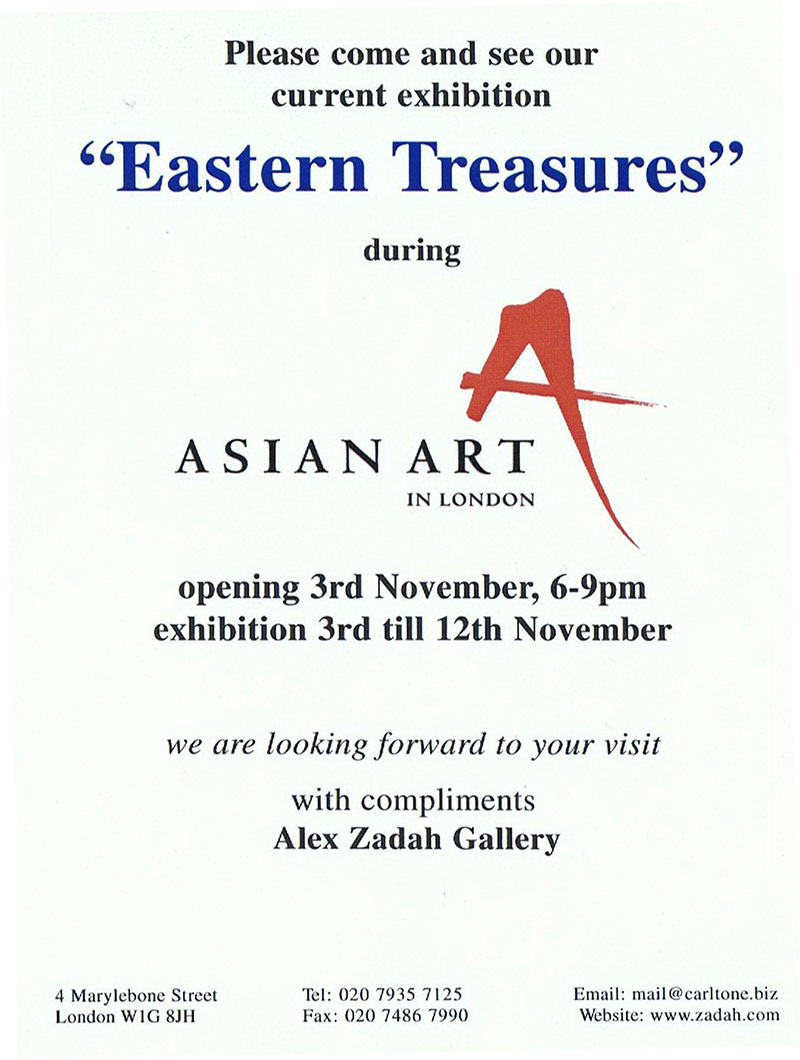
Welcome to London’s leading event for all things in the world of Asian Antiques and Fine Art.
Asian Art in London is an annual event which involves London’s leading Asian art dealers, joining together for a series of selling exhibitions during the 10 days of Asian Art in London.
At the same time, the major auction houses of Bonhams, Christie’s and Sotheby’s hold auctions and gallery talks. In combination with this, the premier London Museums and Institutions present exhibitions and lectures.
Come see the magnificent selection of Asian antiques and contemporary Asian art from: India; China; Japan; the Himalayas and Korea, spanning some 5000 years of culture – including ceramics, furniture, glass, jade, jewellery, manuscripts, metalwork, paintings, screens, stone carvings and textiles.
A Personal Invitation From Zadah
Come and join me for a drink at the Affordable Art Fair, where I shall pop in to see what lovely art is out there.
London, Battersea – 20th–23rd October, 2011
Hampstead – 27 – 30 October, 2011
The Affordable Art Fair’s formula is relatively simple: a relaxed, unstuffy environment and lots of good quality contemporary art.
The price ceiling of £3,000/€5,000/$10,000 and the compulsory labelling of all artwork ensures you know what you can and can’t afford, and the huge array of paintings, sculpture, photography and prints means there is something to suit every taste whether you are a first time art buyer or a seasoned collector. Each year new artists are shown at the fairs, so even if you don’t find your perfect piece the first time it is always worth coming back!
At several of the fairs there is a showcase for recent graduates – giving you the opportunity to snap up a work by a potential star of the future. And there are always lots of other arty activities going on, such as printmaking workshops and talks on collecting art, which are fun, informative and free.
At each event there’s a wine bar or café, and in London and Amsterdam there’s also a crèche where young children can be left to play while you browse.
Come and join me for a drink at the Affordable Art Fair, where I shall pop in to see what lovely art is out there.
London, Battersea – 20th–23rd October, 2011
Hampstead – 27 – 30 October, 2011
The Affordable Art Fair’s formula is relatively simple: a relaxed, unstuffy environment and lots of good quality contemporary art.
The price ceiling of £3,000/€5,000/$10,000 and the compulsory labelling of all artwork ensures you know what you can and can’t afford, and the huge array of paintings, sculpture, photography and prints means there is something to suit every taste whether you are a first time art buyer or a seasoned collector. Each year new artists are shown at the fairs, so even if you don’t find your perfect piece the first time it is always worth coming back!
At several of the fairs there is a showcase for recent graduates – giving you the opportunity to snap up a work by a potential star of the future. And there are always lots of other arty activities going on, such as printmaking workshops and talks on collecting art, which are fun, informative and free.
At each event there’s a wine bar or café, and in London and Amsterdam there’s also a crèche where young children can be left to play while you browse.
We’re Taking Part in ‘Asian Art in London’ 3-12th November 2011
ZADAH GALLERY will be taking part in this years Asian Art in London
Asian Art in London Goes International.
Since its inception in 1998, Asian Art in London has become one of the world’s most important focal points for international collectors of Asian art, with its series of specialist gallery exhibitions and events hosted by leading UK dealers and auction houses. In a new move that further enhances its global appeal, Asian Art in London has for the first time invited overseas specialist dealers to join its ranks for the 2011 event, to be held from 3rd to 12th November.
International dealers taking part in Asian Art in London for the first time are: Art of the Past from New York;Alexis Renard and Christophe Hioco both from Paris; Carlo Cristi from Italy; Carlos Cruañas from Barcelona. From the Netherlands dealers welcomed are Dries Blitz, Michael Meijering Art Books and Vanderven & Vanderven Oriental Art. All international dealers will be taking gallery spaces in central London.
Also new to the event this year and adding a further dimension to the ever-expanding group of participants are several London-based dealers. Modern and contemporary Indian art can be found at Grosvenor Gallery, St. James’s; an exciting Chinese performance art piece will be taking place at Hua Gallery’s Battersea riverside location and Mica Gallery in Sloane Square will show modern Pakistani works.
Recently opened Japanese specialist Rutherston Bandini will present, as part of their exhibition, a delightful ivory netsuke of a Kinko on a carp, c.1780 from the Sheila M. Baker collection. Exquisite oriental carpets and textiles can be found at Zadah Gallery, Marylebone. This brings the total number of participants to 51 expanding the event by over 20% on previous years. A full list of all the participants, their exhibitions and specialities can be found below.
Asian Art in London’s sponsors this year are AFEX (Associated Foreign Exchange) and Apollo Magazine. The Antiques Trade Gazette also continues its invaluable support of the Asian Art in London Art Award for two- and three-dimensional works of art. The award is judged by an international group of experts, including Sir Michael Butler and the Victoria and Albert Museum’s Indian specialist Rosemary Crill, together with Dr Claire Pollard from the Ashmolean Museum and Dr Wang Tao, Senior Lecturer in Chinese Archaeology at SOAS.
The Asian Art in London Gala Party, to be held on the 8th November at the Victoria and Albert Museum, promises to be a spectacular event. The star prize for a lucky guest will be a fantastic free trip to The St. Regis Bangkok hotel sponsored by the St. Regis Group.
Visitors who come to London during the week have the opportunity to view some of the best Asian art in the world, from Imperial porcelain to Contemporary, in gallery selling, exhibitions and auctions, together with lectures and symposia by London’s major museums.
Asian Art in London, now in its 14th year, has an established reputation as one of the most important Asian art events on the international art calendar.
List of Participants: Dealers:
ART OF THE PAST, New York;
Exhibition: By Brush and Chisel: Masterworks from South and Southeast Asia
Specialisation: Antiquities from South and Southeast Asia, the Himalayas, and Islam
DAVID BAKER ORIENTAL ART LTD, London;
Exhibition: Recent Acquisitions
Specialisation: Chinese, Japanese, Korean, Southeast Asian ceramics and works of art
GREGG BAKER ASIAN ART, London;
Exhibition: Few and far between: Six masterworks
Specialisation: Japanese and Chinese works of art, specialising in paper screens and metalwork
JOOST VAN DEN BERGH, London;
Exhibition: Painting and Drawing from the Near, Middle and Far East
Specialisation: Indian, Southeast Asian and Japanese works of art
BERWALD ORIENTAL ART, London;
Exhibition: Recent Acquisitions
Specialisation: Chinese porcelain, pottery and works of art
DRIES BLITZ, The Netherlands;
Exhibition: Early Chinese ceramics and works of art
Specialisation: Chinese and Asian art
BRANDT ASIAN ART, London;
Exhibition: Chinese and Japanese Sculptures, Textiles and Works of Art
Specialisation: Chinese works of art including China Trade and Chinese and Japanese textiles
CARLO CRISTI, Italy;
Exhibition: Tibetan Arts and Central Asian Textiles
Specialisation: Tibetan, Nepalese, Indian, Southeast Asian arts, early textiles from Central Asia and China
CARLOS CRUANAS, Barcelona and New York;
Exhibition: Indian and Himalayan art
Specialisation: Indian, Himalayan and Southeast Asian art
ESKENAZI LTD, London;
Exhibition: Chinese huanghuali furniture from a private collection
Specialisation: Chinese art
JOHN ESKENAZI LTD, London;
Exhibition: Recent Acquisitions
Specialisation: Indian, Gandharan, Southeast Asian and Tibetan art
MALCOLM FAIRLEY LTD, London;
Exhibition: Japanese Works of Art including a Collection of Japanese Armour
Specialisation: Japanese works of art from the Meiji period, including metalwork, enamels, lacquer, ceramics, netsuke and inro
FLEURDELYS ANTIQUITÉS, London;
Exhibition: Art in Wood
Specialisation: Chinese wood stands, ceramics and works of art
SAM FOGG, London;
Exhibition: Drawings from Indian Courts
Specialisation: Islamic and Indian art, Himalayan and Southeast Asian manuscripts and East Asian printed books
OLIVER FORGE & BRENDAN LYNCH LTD, London;
Exhibition: Bengal School Painting
Specialisation: Islamic art, Indian, Himalayan and Southeast Asian art including manuscripts and miniature paintings
FRANCESCA GALLOWAY, London;
Exhibition: Ivory – Material of Desire, Indian goods for the luxury market
Specialisation: Indian miniatures, European and Asian textiles, Islamic and Indian works of art
GIBSON ANTIQUES LTD, London;
Exhibition: Chinese Ceramics and Works of Art
Specialisation: Oriental ceramics and works of art
MICHAEL GOEDHUIS, London;
Exhibition: Fresh Ink from China
Specialisation: Chinese Art
GROSVENOR GALLERY, London;
Exhibition: The Path of the Lotus: Indian Art Ancient to Contemporary
Specialisation: Modern and contemporary Indian art
CHRISTOPHE HIOCO, Paris;
Exhibition: Recent Acquisitions
Specialisation: Indian, Gandharan and Vietnamese art (Dong Son Culture)
HUA GALLERY, London;
Exhibition: Antevasin: ‘One Who Lives at the Borders’ Kuan Ching Mediha Ting – A Solo Exhibition
Specialisation: Chinese Contemporary Art
BEN JANSSENS ORIENTAL ART LTD, London;
Exhibition: Objects for the Scholar’s Desk
Specialisation: Early Chinese sculpture, bronzes and ceramics, and later Chinese works of art. Japanese works of art
ROGER KEVERNE LTD, London;
Exhibition: Fine and Rare Chinese Works of Art and Ceramics
Specialisation: Chinese ceramics and works of art from the Neolithic to the Qing dynasty, including jades, bronzes, enamels, lacquer and other organic materials
ROBERT KLEINER & CO LTD, London;
Exhibition: Recent Acquisitions
Specialisation: Chinese porcelain, snuff bottles, jades and works of art
JEREMY KNOWLES, London;
Exhibition: The Path of the Lotus: Indian Art Ancient to Contemporary
Specialisation: Indian works of art
MARCHANT, London;
Exhibition: The Bertil Högström Collection of Kangxi Blue and White Porcelain, 1662 – 1722
Specialisation: Chinese Ming and Qing Imperial porcelain, jades, cloisonné and works of art
MEIJERING ART BOOKS, The Netherlands;
Exhibition: Winter 2011
Specialisation: Asian art books
MICA GALLERY LTD, London;
Exhibition: The Brit Pak: Emerging British Pakistani Art
Specialisation: Modern Islamic and Contemporary Art (Middle Eastern and Asian Art)
AMIR MOHTASHEMI LTD, London;
Exhibition: Indian furniture and works of art
Specialisation: Islamic and Indian works of art
SYDNEY L. MOSS LTD, London;
Exhibition: Chinese and Japanese paintings and works of art, including lacquer and netsuke
Specialisation: Chinese and Japanese paintings and calligraphy, Chinese literati works of art, and Japanese works of art, including netsuke, inro, pipecases and lacquer
SUSAN OLLEMANS, London;
Exhibition: An exhibition of Mughal and related jewellery, 17th – 19th century
Specialisation: Mughal jewels and gold jewellery from Southeast Asia
KEVIN PAGE ORIENTAL ART LTD, London;
Exhibition: Chinese and Japanese Antiques
Specialisation: Japanese works of art from the Meiji period including Satsuma, metalwork, ivory, wood carvings and netsuke. Chinese antiques, from Ming to 1900, including porcelain and furniture
SIMON PILLING: EAST ASIAN ART & INTERIORS, London;
Exhibition: Shimmering Japan
Specialisation: Japanese works of art, specialising in lacquer
NICHOLAS PITCHER ORIENTAL ART LTD, London;
Exhibition: Chinese Ceramics and Works of Art
Specialisation: Early Chinese pottery, bronzes and later works of art
PRIESTLEY AND FERRARO, London;
Exhibition: Yueyao: The coming of age of Chinese ceramics
Specialisation: Early Chinese works of art, particularly Song ceramics, Han and Tang pottery, Buddhist wood and stone sculptures and early bronzes
SIMON RAY INDIAN & ISLAMIC WORKS OF ART, London;
Exhibition: Indian and Islamic Works of Art
Specialisation: Indian and Islamic works of art
ALEXIS RENARD, Paris;
Exhibition: Indian and Islamic art
Specialisation: Islamic and Indian art
ROSSI & ROSSI LTD, London;
Exhibition: Classical Sculptures and Paintings from the Himalayas and Heri Dono: Madman Butterfly
Specialisation: Indian and Himalayan art, early Chinese textiles and contemporary Asian art
RUTHERSTON & BANDINI LTD, London;
Exhibition: Japanese netsuke from the collection of Sheila M. Baker
Specialisation: Japanese works of art, in particular netsuke, inro and lacquer
JACQUELINE SIMCOX LTD, London;
Exhibition: Chinese Textiles
Specialisation: Chinese, Tibetan & Central Asian textiles
A&J SPEELMAN LTD, London;
Exhibition: Recent Acquisitions
Specialisation: Rare Chinese, Japanese, Himalayan, Indian and Southeast Asian works of art, including Tang pottery, early lacquer, cloisonné enamel, Hindu and Buddhist bronzes, porcelain and stone sculpture
S&J STODEL, London;
Exhibition: Chinese Export Silver
Specialisation: Chinese Export Silver, Japanese Silver
GRACE TSUMUGI FINE ART LTD, London;
Exhibition: Ten year Anniversary
Specialisation: Japanese art from the Edo and Meiji periods to contemporary: metalwork, lacquer, inro, netsuke, pipe-cases, cloisonné enamel, ceramics, paintings and screens
JONATHAN TUCKER ANTONIA TOZER ASIAN ART, London;
Exhibition: An important group of sculptures from India, Southeast Asia and China
Specialisation: Indian, Southeast Asian and Chinese works of art. Most strongly represented in the fields of stone and bronze sculpture, ceramics and textiles
VANDERVEN & VANDERVEN ORIENTAL ART, The Netherlands;
Exhibition: Amazing Blue and White
Specialisation: Chinese porcelain, early ceramics and works of art. Japanese lacquer and works of art
JORGE WELSH ORIENTAL PORCELAIN AND WORKS OF ART, London / Lisbon, Portugal
Exhibition: A celebration of Chinese Export Porcelain
Specialisation: Chinese export porcelain and works of art related to the European Expansion from Africa (Afro-Portuguese), India (Indo-Portuguese) and Japan (Namban)
ZADAH, London;
Exhibition: Eastern Gems
Specialisation: Persian and Islamic art and textiles
List of Participants: Auction Houses:
The auction houses will be holding the following auctions:
BONHAMS, New Bond Street, London;
The Harriet Szechenyi Collection of Japanese Art 8th November
Fine Chinese Art 10th November
The Evans Collection of Later Chinese Porcelain
A European Collection of Chinese Export Figures
Fine Japanese Art 10th November
BONHAMS, Knightsbridge, London;
Chinese and other Asian Works of Art 7th November
CHRISTIE’S, King Street, London;
Fine Chinese Ceramics and Works of Art; 8th November
Important Rhinoceros Horn and Jade Carvings From a
Distinguished European Collection
CHRISTIE’S, South Kensington, London;
Asian Interiors 9th November
Japanese Art & Design 9th November
Chinese Ceramics, Works of Art & Textiles 11th November
SOTHEBY’S, New Bond Street, London;
Fine Chinese Ceramics and Works of Art 9th November
WOOLLEY & WALLIS, Salisbury, Wiltshire.
Yixing Zisha Wares 15th November
Asian Art I 16th November
Asian Art II 17th November
Asian Art In London Gala Party:
The annual Asian Art in London Gala Party is one of the highlights of the Asian art calendar.
This year’s Gala will be held at the V&A and all guests will enter a free prize draw to win a luxury holiday for two in Bangkok, courtesy of The St. Regis Hotels and Resorts. It is recommended that tickets are booked early as capacity is limited.
Victoria and Albert Museum: Tuesday 8th November
Admission strictly by ticket only
Tickets £50 each and MUST be pre-booked in advance from Asian Art in London
+44 (0)20 7499 2215 or info@asianartinlondon.com
Late-Night Openings:
Special late-night openings will be held at following locations during Asian Art in London:
- Kensington Church Street: 5 – 9pm, Saturday 5th November
- St. James’s: 5 – 9pm, Sunday 6th November
- Mayfair: 5 – 9pm, Monday 7th November
Tours:
Asian Art in London hosts a series of educational tours over the 10 days. Introductory guided tours of the participating galleries and auction houses can be booked in advance. Please contact info@asianartinlondon.com or call +44 (0)20 7499 2215.
Travel:
Asian Art in London has partnered with Turon Travel in New York to create exclusive travel experiences.
Partners:
This year Asian Art in London has partnered with ArtAsiaPacific magazine to present an array of contemporary Asian art events such as gallery tours, exclusive in-conversations with artists and collectors and panel discussions.
Sponsors:
Antiques Trade Gazette
Apollo Magazine
AFEX (Associated Foreign Exchange)
Zadah – Antique Textile and Rug Collector, Dealer and Expert
Zadah – World-Recognised Eastern Antique Textile, Rugs, Carpets and Tapestries Expert
Zadah is an entrepreneur with several successful businesses – including Property Development, Films, Construction and Trading Antique Cars – but only one true love…
Zadah is a 3rd Generation Historical Textiles Collector and Dealer. He has an unrivalled knowledge of Ancient Carpets, Rugs, Textiles and Antiquities from the East and West – from Persian Carpets to Ancient Islamic Antiquities to Early European Tapestries. His Gallery can be found online at Zadah.com – please call us on 0207 935 7125 today if you would like to know more about, or buy, any of the items you see on the site.
Zadah’s ancient collection of textiles features breath-taking, museum-quality pieces from a range of civilisations and timescales – from Coptic fragments from the 3rd Century AD, to Persian Rugs from centuries ago, to mysterious artifacts, each with their own unique tales of history, war and the society that prduced them to tell. These items come from many of the most powerful empires and dynasties throughout the world – The Mongols, The Safevids, The Ming Dynasty, The Mughuls, The Ottoman Empire, The Turkmens, to name but a few:
For example:
You will find the finest of Silk Weavings from Isfahan in our Textiles Collection.
Isfahan was the Central and Cultural capital of the Persian Empire of Shah Abbas throughout the the 16th and 17th Century. Isfahan is already a city of ancient history and considerable wealth when Shah Abbas decides, in 1598, to turn it into a magnificent capital. It has a Masjid-i-Jami, or Friday Mosque, dating from the Seljuk period (11th-12th century), still surviving today and noted for its fine patterned brickwork. And it has a thriving school of craftsmen skilled in the making of polychrome ceramic tiles. Shah Abbas favours in architecture what comes to seem almost the theme of his city – gently curving domes covered in a glorious array of Isfahan’s coloured tiles. The new centre of the city is a vast rectangular space, the Maidan-i-Shah (Royal Parade), designed for parades and polo. At its southern end there rises the most magnificent of Isfahan’s swelling blue domes, on the Masjid-i-Shah (Royal Mosque). The tiles are shaped where necessary to fit the curve of the dome, as are those which clad the mosque’s circular minarets. The dome is reflected in a great pool in the courtyard. On the east of the Maidan-i-Shah is a smaller blue dome, on the Mosque of Sheikh Lutfullah – built by Shah Abbas in honour of his father-in-law and used as his private chapel. There are other glorious buildings in Isfahan, but these domes have become the trademark of Persian Islamic architecture.
Our Galleries
The Zadah Gallery hosts probably – the greatest Collection of Ancient Rugs, Carpets, Eastern Textiles and other amazing historical Eastern art and artefacts from the most powerful Dynasties throughout the ages. travels throughout the world searching for textiles created by Artisans at the peak of the trade, that teach us things about the culture and the society of the Dynasty they represent.
He has owned a number of galleries throughout London and is a vastly-experienced, expert collector and dealer in ancient rugs, old tapestries, fine Eastern textiles, ancient Persian rugs, Eastern carpets, fine European Tapestries and antiquities from around the world. is often featured in local newspapers and the Art Industry press such as Hali magazine. You can find additional examples of recent media in the Press Section or Blog Section of the site.
We also own 2 more Galleries In Europe:
– The Zada Gallery in Brussels, in Belgium
– and another in New York.
Zadah began trading in London, in Galleries in Mayfair and Marylebone first of all, but Zadah was driven to expand further and soon expanded into North West London as well, providing a wealth of knowledge and expertise to his clients, who make up a veritable Who’s Who of International Royalty and Celebrities.
‘s Latest Gallery is located in Marylebone, where he holds international exhibitions throughout the year, holds public and private viewings for small-medium sized groups, introduces his clients to the latest items in the collection that may interest them, and provides rare pieces for auction at Sothebys and Christies. If you want to arrange a viewing, or you see a piece on the website that you would like to learn more about, arrange to see, and perhaps even buy, please call us today on 0207 935 7125 or you can use our simple contact form
Carltone Property
 also has a Property Development company called Carltone Property, initially set up to develop a portfolio of high quality properties to rent out, both residential and commercial. He is always looking for new projects and to continue building a reputable network of other entrepreneurs for joint ventures. He has always been self employed although he worked for Piston as Chief design Engineer when he first graduated from University with a Degree in Engineering.
also has a Property Development company called Carltone Property, initially set up to develop a portfolio of high quality properties to rent out, both residential and commercial. He is always looking for new projects and to continue building a reputable network of other entrepreneurs for joint ventures. He has always been self employed although he worked for Piston as Chief design Engineer when he first graduated from University with a Degree in Engineering.
Zadah has a passion for classic cars, almost as great as his passion for ancient textiles, and he owns a 1917 FORD Model T which he drives around London in Summer – it’s very old, very eye-catching and it turns up in Newspapers and Magazine features all the time . The only other one in London belongs to the Science Museum, which has a sign in front of it saying ‘Do Not touch’!
He has a few employees working for him on a permanent and freelance basis…and his office gets full during exhibition seasons.
America Trip – 19th Century Antique Tibetan Carpets
19th Century Antique Tibetan Dragon Carpet
has just returned from a viewing trip to America, where he has been privileged to see a variety of antique rugs and ancient textiles.
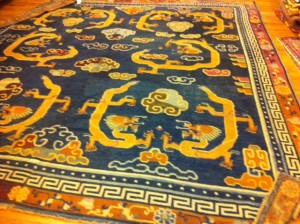 “During my trip to the USA, I chanced upon this fantastic piece – a 19th Century Antique Tibetan Carpet. Interestingly, the Dragons are all large – 3 or 4 frets long. It’s very rare to see this type of work – it’s a speciality – this particular Tibetan carpet has been made in 2 pieces, in 2 separate looms, which were then brought together at a later date to complete the Tibetan carpet.”
“During my trip to the USA, I chanced upon this fantastic piece – a 19th Century Antique Tibetan Carpet. Interestingly, the Dragons are all large – 3 or 4 frets long. It’s very rare to see this type of work – it’s a speciality – this particular Tibetan carpet has been made in 2 pieces, in 2 separate looms, which were then brought together at a later date to complete the Tibetan carpet.”
“I will be exhibiting this fantastic 19th Century Antique Tibetan Carpet at Asia week, at the BOAF in Brussels“.
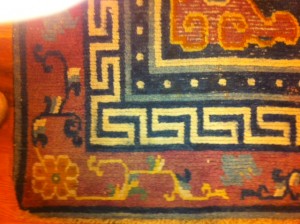 Dragons are one of the more popular designs on antique Tibetan carpets, as the Dragon is a good luck symbol in Tibetan folklore – Tibetans consider the Dragon to be a benevolent being, bringing goodwill to mankind. This is in sharp contrast to the way ancient Western culture portrays the Dragon – in George and the Dragon, for example.
Dragons are one of the more popular designs on antique Tibetan carpets, as the Dragon is a good luck symbol in Tibetan folklore – Tibetans consider the Dragon to be a benevolent being, bringing goodwill to mankind. This is in sharp contrast to the way ancient Western culture portrays the Dragon – in George and the Dragon, for example.
Dragons on Tibetan rugs usually take the form of a Thunder Dragon, or more rarely, a Wood Dragon. Thunder Dragons are often seen on Tibetan carpets with clouds denoting their passage through the sky. They are called Thunder Dragons due to the noise they make as they pass through the heavens. Lighting may also be seen on a Tibetan carpet featuring a Thunder Dragon
The Thunder Dragons of Ancient Tibetan Carpets aren’t mere flying creatures. They also rule the seas and hold dominion over the rain. The Tibetan word for Dragon is ‘Druk’ – and it appears on all kinds of textiles and objects – from ancient Tibetan Carpets to Paintings, in Architecture and murals. To the Tibetans, Druk is a magical creature that lives in the clouds.
See our other Eastern Rugs and Carpets
Ottoman Textiles Reveal Lifestyles From The Past at The Museum of Islamic Art
Intricate Historical Ottoman Embroidery Provides a Link To The Past
As we have several fine examples of Ottoman textiles, and an intricately embroidered Ottoman Waistcoat in the Zadah Gallery, we were particularly interested in a recent article in Hali magazine reviewing the ‘Embroidered Dreams’ exhibition running at the famed Museum of Islamic Art in Jerusalem, also reviewed on the GoJerusalem website. The exhibition features a collection of Ottoman embroidery dating back to the early days of the Ottoman Empire, from places as diverse as Greece and North Africa – which made up just a small part of the Ottoman Empire at the peak of its’ reach. The Museum of Islamic Art is well known for exhibitions that portray and reflect life in the East during specific periods in history, and this one is no exception – presenting a display reflective of what women did within the period and how they considered themselves.
The Ottoman Empire dates back to 1289 with the reign of Osman 1, who founded the Empire. Rising to prominence through the 15th, 16th and 17th Centuries, the Ottoman Empire was at its’ peak in the 16th Century. It fell into stagnation in the 17th and 18th Centuries, declining more rapidly in the 19th Century, finally coming to an end in the early years of the 20th Century – before and during the First World War. The Republic of Turkey is the successor state to the heart of the former Ottoman Empire.
Ottoman embroidery pieces are unique – hand-embroidered pieces where no two are the same. Traditionally, they feature floral patterns, but stand-out pieces include garden themed pieces and architectural designs. The pieces often include ornate designs and embellishments not seen in today’s mass-produced towels and textiles. Many of the pieces in the exhibition are known as ‘luxury towels’ but they have nothing in common with today’s towels – they were used more for decoration, and often comprised a part of a bride’s dowry – the Ottoman bride would display the pieces as a sign of her abilities and potential.
Embroidery has fallen out of fashion – women are no longer sitting around with hours to dedicate to the craft, and it’s no longer a much-enjoyed pastime. That makes the Ottoman embroideries all the more important as a piece of history, reflecting a culture lost in modern times. Their intricacy, uniqueness and unrivalled attention to detail makes Ottoman embroidery a a cultural icon from history that deserves our reverence, a forgotten craft from a time long past.
Ottoman Pieces For Sale in the Zadah Gallery
Ottoman Textile, from the early 1700s
Call us on (+44) 0207 935 7125 for more information on any of the pieces above
Hali Magazine Feature on the Ottoman Embroidery Exhibition

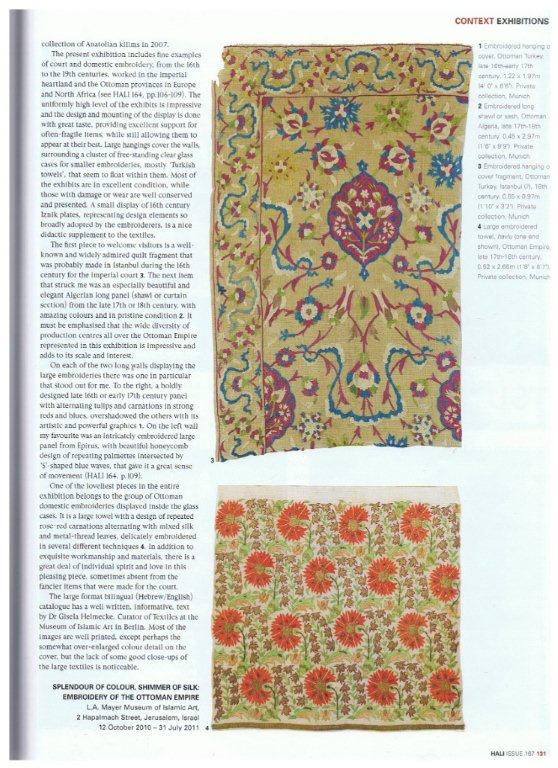

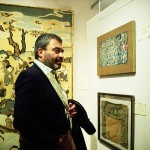
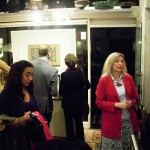
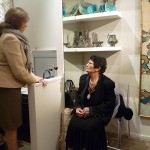

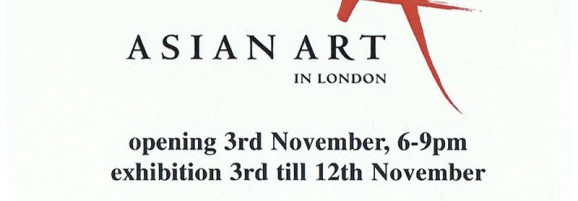
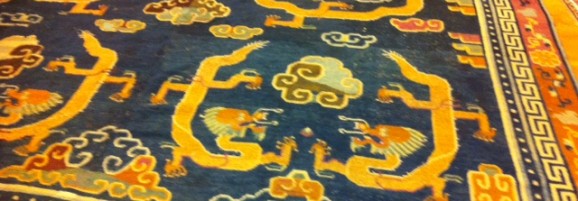
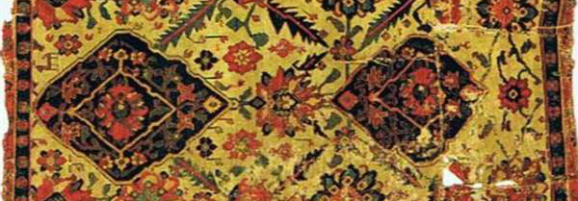
 Download your own copy of 1001 Arabian Nights for free
Download your own copy of 1001 Arabian Nights for free
 There was once a Sultan of India who had three sons. These, with the princess his niece, were the ornaments of his court. The eldest of the princes was called Houssain, the second Ali, the youngest Ahmed, and the princess his niece, Nouronnihar.
There was once a Sultan of India who had three sons. These, with the princess his niece, were the ornaments of his court. The eldest of the princes was called Houssain, the second Ali, the youngest Ahmed, and the princess his niece, Nouronnihar.